On a cold but sunny, blue-skied day this past winter, we
took a drive to the town of Babenhausen.
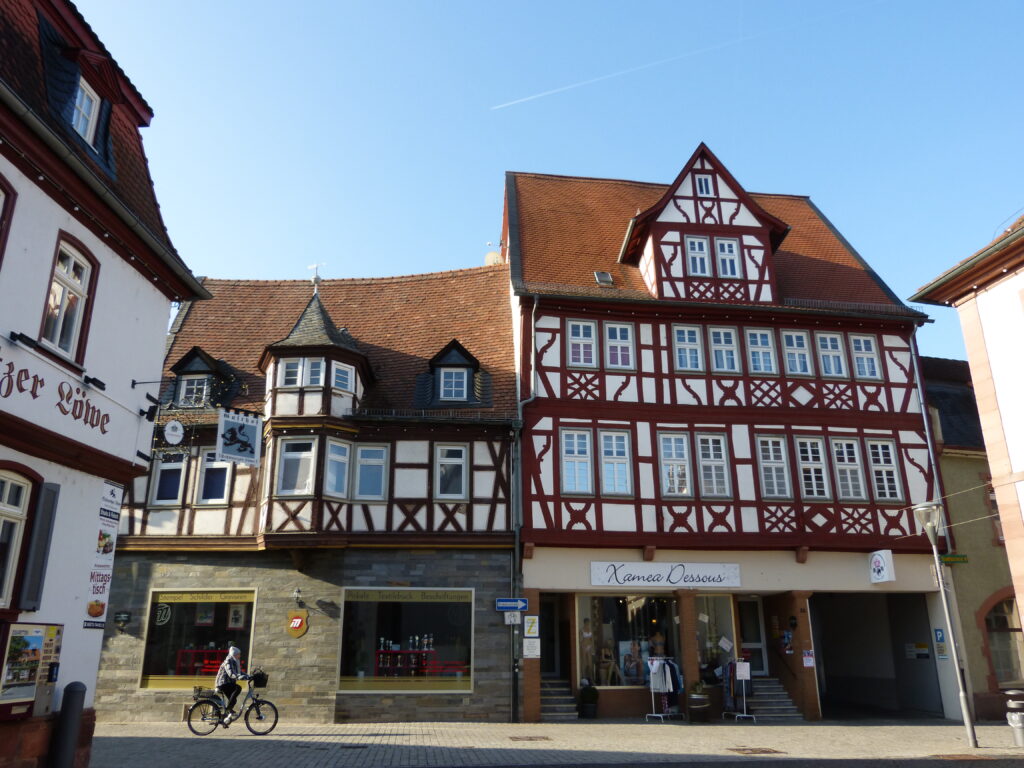
Babenhausen obtained city rights way back in the year 1295 –
720 years ago this year – and today is part of the German Half-Timbered House
Route.
Arriving in town, we headed for the Tourist Information
office as we usually do.
Unfortunately it was closed but there were walking tour maps
available – in German – outside the office.
We had also printed out a badly-translated description of some of the
points of interest.
Armed with both of these, we headed off.
One of the first buildings you run into is the Stadtkirche
or City Church.
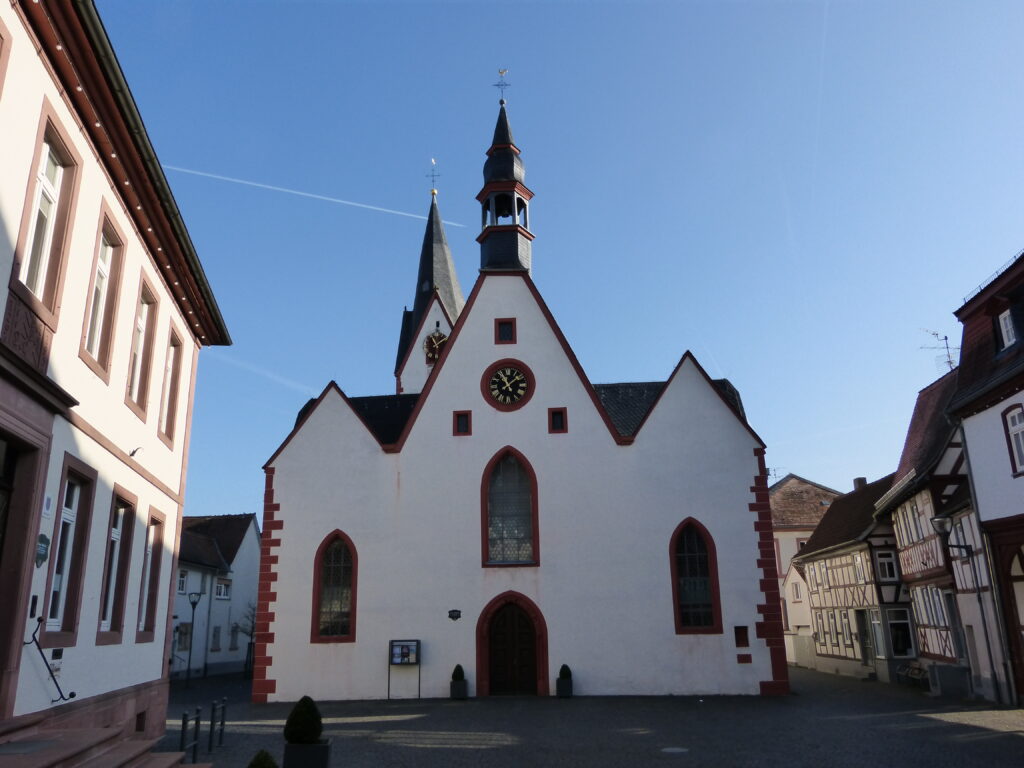
The earliest part of the church was built in 1383and later
parts were built in 1472.
Unfortunately the church was not open to visitors when we
were there.
Near the church is the Neues Rathaus or New City Hall.
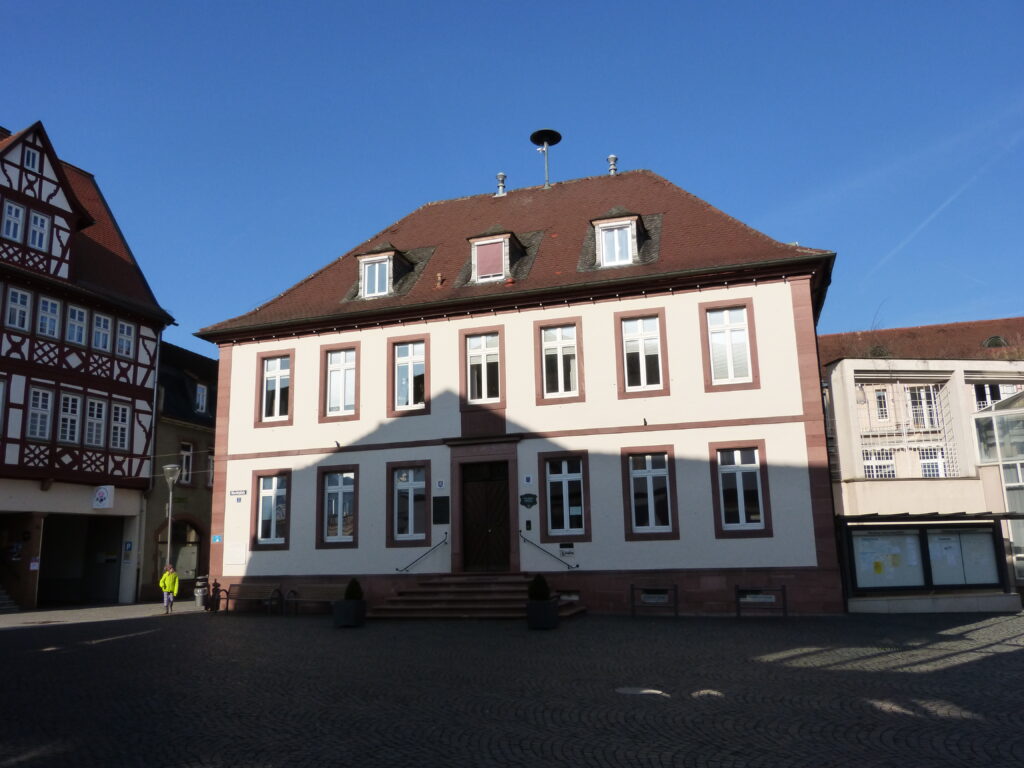
In the early 1800s the city hall was a half-timbered
building.
Unfortunately, the city was damaged by bombs during World
War II, and the half-timbered building was destroyed.
You might have noticed that the two photos above both
captured people riding bicycles.
I’m here to tell you that Germans love a good bike ride and
nothing can stop them.
No matter the weather they are out there peddling away and
as I said, the day we visited Babenhausen was a pretty cold day.
Part of the original city walls are still standing.
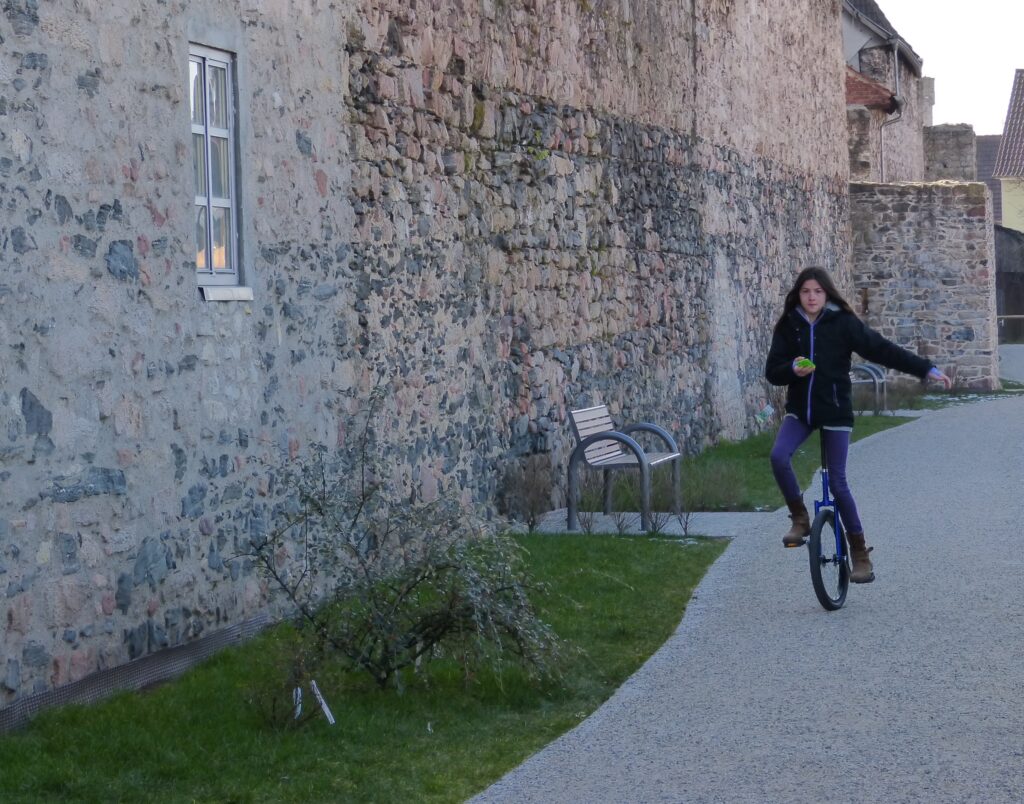
And look, there’s a girl on a unicycle!
Like I said, nothing can stop the Germans from peddling
away.
This was probably the prettiest building we saw in
Babenhausen.
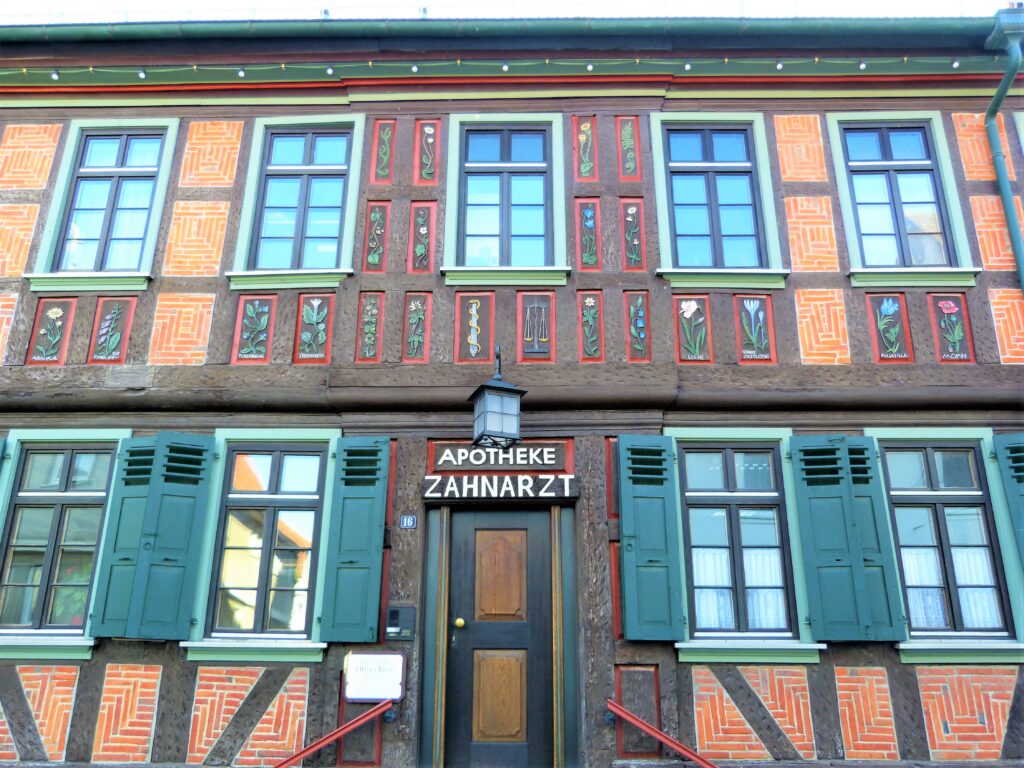
It’s the Alte Apotheke or Old Pharmacy, built in 1774.
The carvings on the upper half of the building, showing
medicinal plants, were gorgeous.
They were added much later, though, in 1935. Thankfully the building survived the bombing.
Babenhausen was home to a couple of U.S. Army brigades and
regiments from 1945 to 2007.
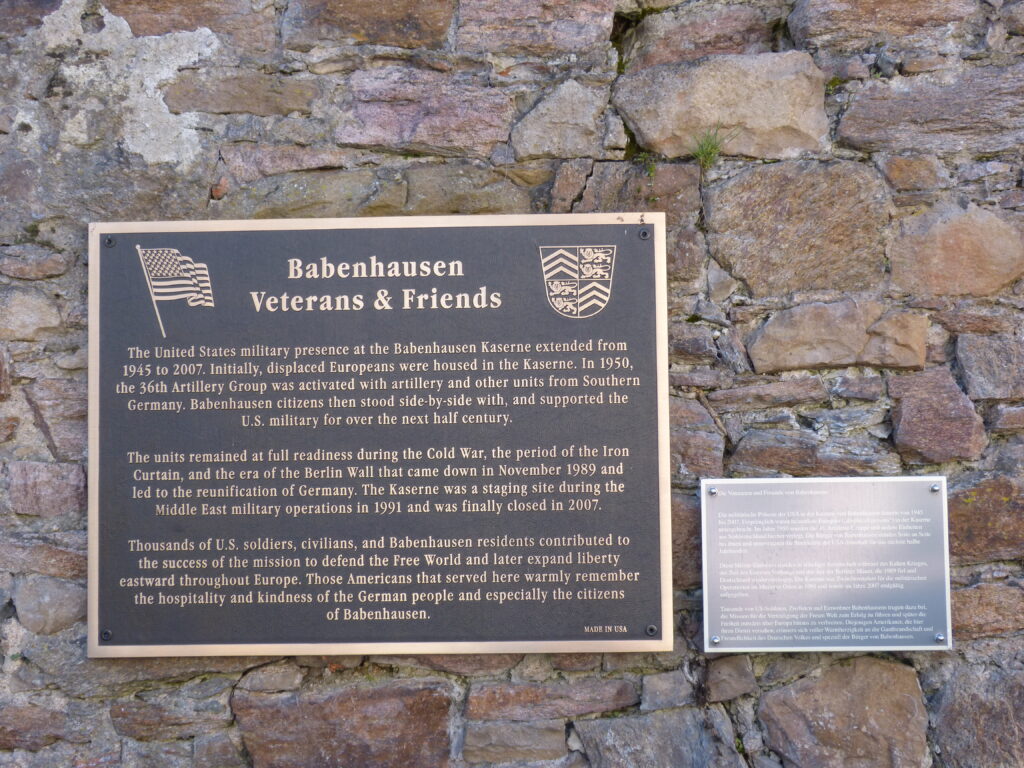
Like many German towns, Babenhausen has a Hexenturm or
Witches Tower.
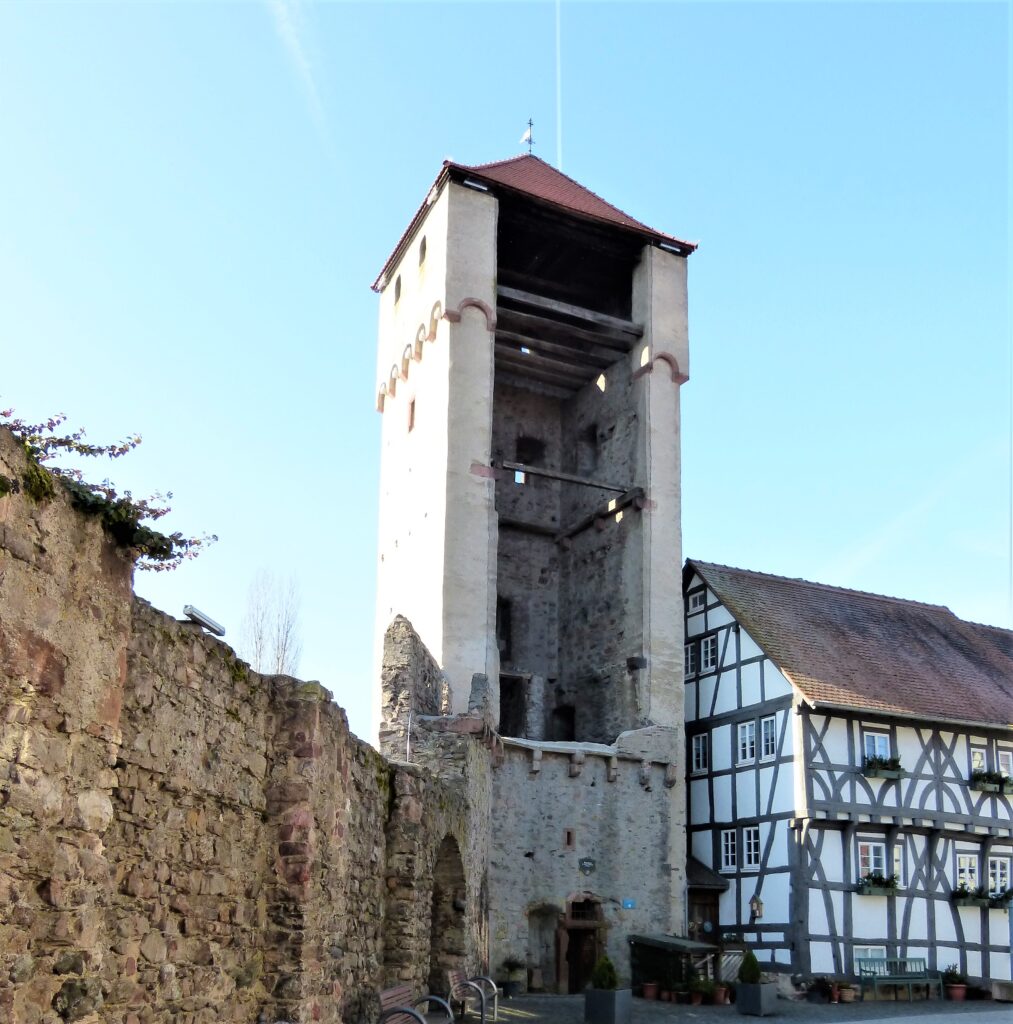
The information we’d printed out indicated that although
those accused of being witches were tortured and died at that tower, there is
no evidence of them having been burned.
Whew, what a relief that it was only death by torture.
Next to the tower is the oldest half-timbered house in
Babenhausen, dating from 1484 (despite the sign on the house saying it’s from
1442).
Although it wasn’t on the walking tour map, we made a detour
into the cemetery.
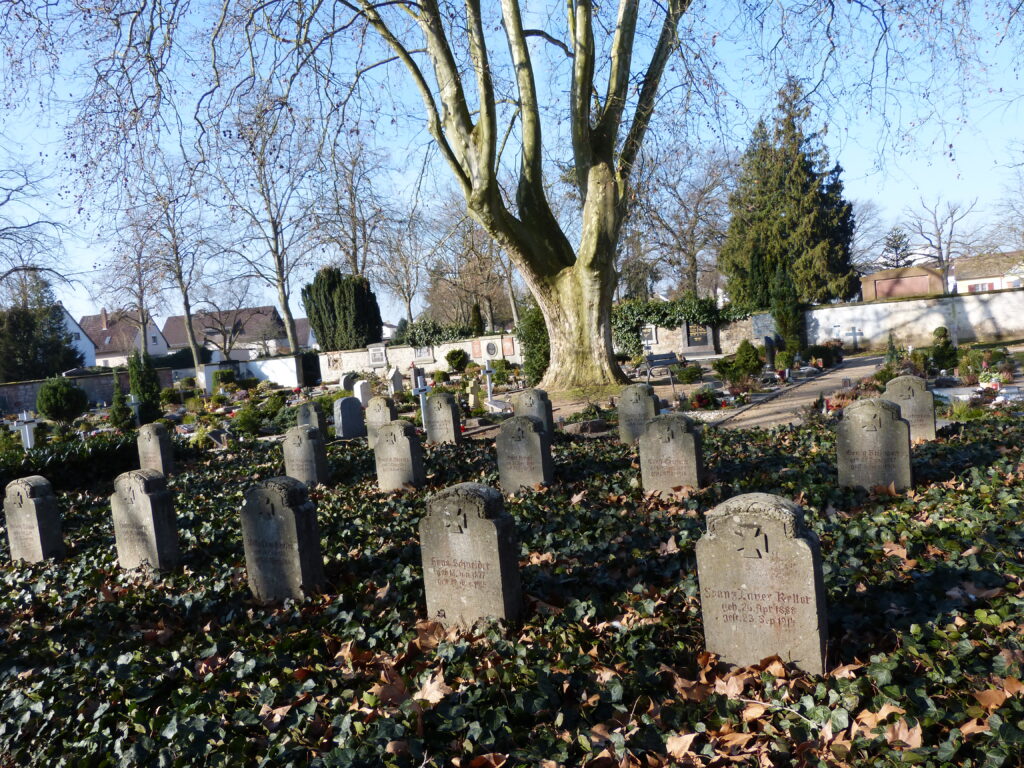
As usual, there was a section of graves for German soldiers
killed during World War II.
It always strikes me how small, dark and somber-looking
these headstones are compared to the bright, white markers that you see at
American military cemeteries.
The Breschturm is one of the remaining city wall towers.

See that big, roundish hole towards the top of the
tower?
It was made by a cannonball during the Thirty Years’ War in
the 17th century.
Bresche is the German word for “breach, and Breschturm
(Breach Tower) is actually a nickname for the tower. It was formerly called the Spitzer Turm.
This yellow building, near another lovely half-timbered
house, is the back side of the town mill.
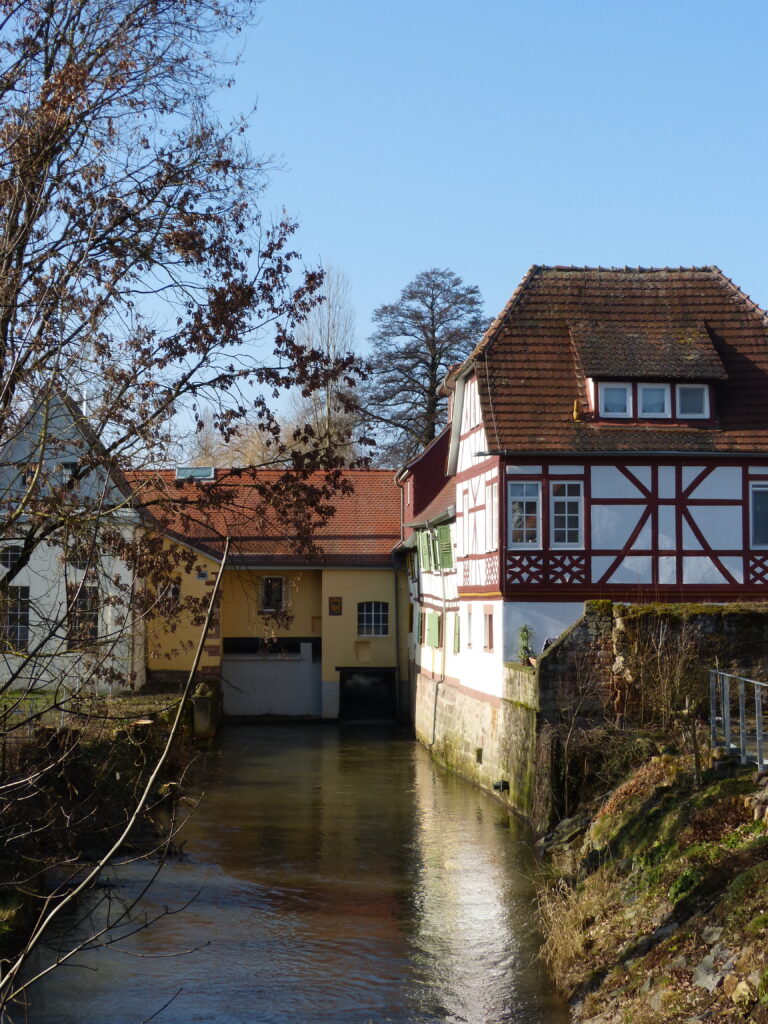
In the Middle Ages it was a grist mill, and the mill still
functions today to produce “green” electricity.
Underneath the window on the right-hand side of the
building, you may be able to see the water rushing through.
I love the fact that so many towns on the Half-Timbered
House route are close enough for a day trip and we will be visiting lots more
of them while we’re here.

